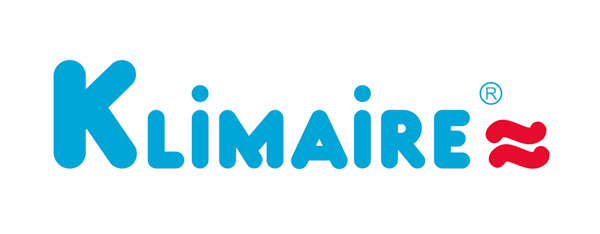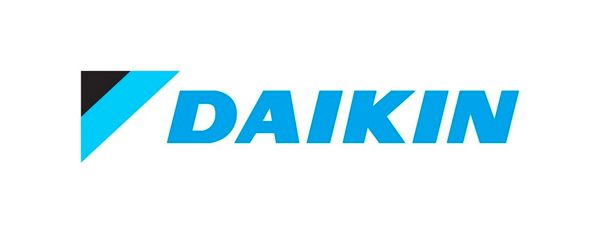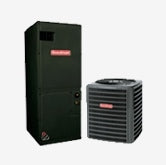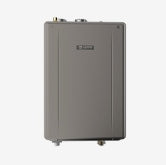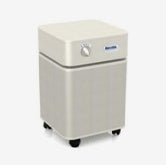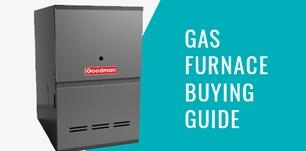Glossary
Absolute Humidity - A measure of the actual amount of water vapor in the air. See Relative Humidity and Humidity.
Absorption - The capturing of atoms, molecules or ions by the total volume of a substance. The captured matter is held onto and distributed throughout the absorbing substance. This differs from adsorption in which the captured matter is only held onto and distributed on the surface of the adsorbing sustance rather than throughout.
Adsorption - Attracting and holding onto (adhesion) of atoms, ions, molecules from a gas, liquid or disolved state to a solid surface.
AHRI (Air-Conditioning, Heating, and Refrigeration Institute) - The trade association representing manufacturers of HVACR and water heating equipment within the global industry.
Air Curtain - Air curtains, also called air doors or air screens, are self-contained units that are installed above doorways or next to openings for the purpose of creating an air barrier between two different spaces. They blow room temperature or heated air -- if equipped with heating mechanics -- to establish an invisible barrier. They are effective at maintaining separate temperatures between two spaces, keeping out bugs, pollutants and odors.
Air Changes Per Hour (ACH) - This is the number of times per hour air "changes" within an enclosed space. It usually refers to air passing through a filtering system. ACH goes hand in hand with the measurement cubic feet per minute (CFM), which is the volume of air that passes by a certain point every minute. It is different than Air Exchange Rate.
Air Exchange Rate - This is the rate at which air inside an enclosed space is replaced with air outside (ventilation).
Air Handler Unit (AHU) – Refers to the indoor unit in a ducted split system. It houses the evaporator coil and fan blower. Heat pump indoor units have coils that function as either evaporators (for cooling) or condensers (for heating), depending on the desired outcome.
Air Purification - Technology that improves indoor air quality. This includes capturing, absorbing, killing or removing pollutants such as bacteria, viruses, airborne particles of various sizes, particulate matter, gases and odors.
Air Washer - A hybrid air purifier and humidifier. The indoor air quality appliance purifies the air through filtration and usually antimicrobial technology. They also add moisture to the air for humidification.
Annual Fuel Utilization Efficiency (AFUE) – Detailed as a percentage, this rating measures the efficiency of a gas furnace in converting fuel to energy. It is calculated by projecting the average thermal efficiency for a complete heating season. A higher AFUE rating means greater energy efficiency.
ANSI (American National Standards Institute) - A private nonprofit organization that coordinates and administers the U.S. voluntary standards and conformity assessment system.
Alternating Current (AC) - Describes electric energy flow that periodically reverses direction. In the US, the electric power standard is AC that reverses direction 60 times per second. This is described as 60 Hertz or 60 Hz. 50 Hz is the standard in Europe, most of Asia, most of South America and Australia.
Amperage - Amount of electric current used or needed to run a device. It is measured in amperes (amps).
Bioethanol (Ethanol) - A renewable energy source made from the fermentation of sugars or starches derived from sugar beets, beetroot, and any sugar or starch that alcoholic beverages can be made from. As a fuel for ventless fireplaces it is often sold in liquid form. DecorPro sells ethanol in liquid and gel form, not to be confused with gel fuel, also known as alcohol gel fuel. Bio-Blaze sells liquid bioethanol.
Biofuel - Fuel made from recently living organisms. Bio-fuel is renewable, unlike fossil fuels (coal, oil, natural gas) which take millions of years to form. Bioethanol, also called ethanol, is a widely-used biofuel.
Biomass - The sum total of organic material in a specified area. Biomass fuel is fuel made from organic amtter. Biofuels are made from biomass.
BTU - Stands for British Thermal Unit and measures heat energy. One BTU refers to the amount of thermal (heat) energy required to raise or lower the temperature of one pound of water one degree Fahrenheit.
BTU/h - Air conditioning and heating system capacity is usually described by the system’s hourly BTU output, or BTU/h. The higher the BTU measurement, the more powerful the unit. For instance, a 10,000 BTU/h unit provides 10,000 BTUs per hour to heat or cool a space. The capacity of HVAC is also calculated in tonnage. One ton is equal to 12,000 BTUs.
California Low NOx (Nitrogen Oxide, NO) Emissions Standard - The State of California has emission limits for natural-gas-fired, fan-type central furnaces in 6 regions. It states: natural-gas-fired, fan-type central furnaces shall not emit more than 40 nanograms of oxides of nitrogen (calculated as NO2) per joule of useful heat delivered to the heated space.
Capacity - In HVAC, a unit's or system's capacity refers to the hourly BTU output, or BTU/h. The capacity of HVAC is also calculated in tonnage.
CFM (Cubic Feet Per Minute) - Measures the cubic feet of air that passes by a fixed point per minute.
Compressor - The component in HVAC that circulates the refrigerant throughout the system. Refrigerant enters the compressor in a low pressure gas state and is then compressed. The act of compression changes the refrigerant into a high pressure and high temperature gas.
Condenser Coil - A heat exchanger found in an air conditioning system. In a standard split system, it's housed in the the outdoor unit, also called the condensing unit or condensor. Its function is to remove heat from incoming high pressure, hot vapor refrigerant, change its state and condense it into a liquid form. As a fan blows ambient air through the condenser coils, the refrigerant, in a gas state, rapidly loses heat and condenses to a liquid state. From the condenser, the refrigerant travels to the expansion valve and then to the evaporator coil to complete the refrigeration cycle.
Condensing Furnace - Also known as a high-efficient furnace or high-efficiency furnace. These furnaces achieve the highest energy savings by using a secondary heat exchanger to extract heat from exhaust gas that results from the combustion in the first heat exchanger.
COP (Coefficiency of Performance) - The performance rating used primarily in heat pumps. It is defined as the ratio of heat or cooling output to the amount of energy input (energy used). Higher numbers indicate better energy efficiency.
Dehumidify – To extract and remove humidity (water vapor) from the air. A dehumidifier is a self-contained unit that cools air by passing it through a cold surface. This causes moisture in the air to condense to liquid state so it can be collected in the form of water (H2O) and removed. In addition to water, dehumidifiers can feature filtration to remove airborne particles, including mold spores, pollen, bacteria, etc. Air conditioners help dehumidify inside air.
Demand-type Water Heater - An appliance that heats water without the use of a storage tank. Water is heated as needed by an electric element or gas burner. They are also called "tankless" and "instantaneous" water heaters.
DIP Switch - A set of switches included in a dual in-line package (DIP) that enable the user to customize the behavior of the electronic device when desired.
Direct Vent - Refers to technology that brings in outdoor air for combustion and then directly vents out the exhaust and by-products. Direct vent technology can be ideal for fireplaces, water heaters and other combustion appliances when a chimney or flue is not possible or desired.
DC Inverter - Technology that converts AC current to DC current. With heating and air conditioning systems, direct current enables variable speed technology. A variable speed motor automatically adjusts its speed to match the heating or cooling demands of the space. Other benefits of variable speed technology in HVAC include quiet operation, longer lifespan, and a balanced and constant room temperature. Variable speed HVAC units also use less energy than standard heating or cooling systems.
Direct Current (DC) - Describes electric energy flow that remains constant in one direction.
Draft Inducer - In a gas furnace, this blower motor (fan) moves air in the heat exchanger before the flame is lit and while it is burning. Purging the heat exchanger prevents gas seepage into the house and soot buildup. This control over the quality and speed of the air fed to the ignition improves energy efficiency.
ECM (Electronically Commutated Motor) - A variable speed ECMor multi-speed ECM. The speed may be modified through a variable frequency drive or DC inverter technology.
Energy Efficiency Ratio (EER) - The ratio of an ac system’s cooling output to power input (energy consumption) in Watts. It is the true rating for heat pump and cooling system efficiency. EER is calculated by dividing the cooling output, measured in BTUs, by the total electric energy input (consumed) in watt-hours. In the US, cooling capacity is measured by using 95°F as the outside temperature, 80/67°F as the indoor temperature dry bulb and wet bulb temperatures, respectively.
Energy Factor (EF) - A measurement used in the United States to measure energy efficiency of appliances including dehumidifiers and water heaters.
Evaporator Coil - A heat exchanger found in an air conditioning system. In a standard split system, the air handler unit/inside unit contains the evaporator coil. It functions by causing incoming low pressure, cold refrigerant to completely vaporize. Refrigerant enters the coil in precisely regulated amounts from the TXV in two states: gas and liquid. As a fan blows indoor air through the evaporator coil, the refrigerant rapidly absorbs heat and fully changes to gas form. This is known as superheating. From the evaporator coil, the refrigerant travels to the compressor.
Fan Coil - A device used in heating and cooling that contains a fan and a heating and/or cooling coil. It is installed inside of the home. Mini-split and multi-split systems indoor units are often referred to as fan coils. Fan coils are not identical to air handlers.
Fins - Stationary, delicate and usually sharp metal vanes bonded to tubing in an HVAC system. Together fins and tubing comprise the evaporator coil and condenser coil. Fins optimize heat transfer by expanding surface area and helping circulate air through the coils. HVAC manufacturers vary fin density, material used (aluminum or copper) and design. Choices include slotted, louvered, corrugated, flat as well as different overall dimensions.
Heat Exchanger - A piece of equipment designed for heat transfer from one medium to another. In HVAC, coils are used for the exchange of heat energy in heating and cooling applications.
Heat Flow - Heat always moves, or transfers, from a hotter object to a colder object.
Heat Pump - In HVAC, a heat pump transfers heat from one area to another to cool or heat a space. Heat pumps provide cooled air through the regular refrigeration cycle and provide heat by reversing the refrigeration cycle.
Heating Seasonal Performance Factor (HSPF) – An air source heat pump’s heating efficiency rating over a heating season. It is calculated by dividing the total heat output during the normal heating season, measured in BTUs, by total electricity input (consumed) in watt-hours. The higher the rating, the higher the efficiency.
HEPA (High Efficiency Particulate Arresting) - A type of filter that filters 99.97% of all particles as small as 0.3 microns. The US Environmental Protection Agency (EPA) set the criteria for HEPA.
High Efficiency/High Efficient Furnace - Also known as a condensing furnace. These furnaces achieve the highest energy savings by using a secondary heat exchanger to extract heat from exhaust gas that results from the combustion in the first heat exchanger.
Hertz - A unit of frequency. The international symbol is Hz. USA is a 60 Hz country.
Humidifier - A humidifier adds moisture to the air.
Humidity - Water vapor in the air.
HVAC (Heating, Ventilating and Air Conditioning) - Equipment used to create a comfortable and healthier indoor environment. Capabilities include heating, cooling, dehumidification, humidification, and ventilation.
Inside Unit - In a split air conditioning system, this is the unit that is installed inside the home. It is also called an air handler unit.
Instantaneous Water Heater - An appliance that heats water without the use of a storage tank. Water is heated as needed by an electric element or gas burner. They are also called "tankless" and "demand-type" water heaters.
International System (S.I. or Système Internationale) - The metric system, an internationally-standardized system providing a common measurement language between nations and the different branches of science and technology.
Indoor Air Quality (IAQ) - Refers to the quality of air inside a building measured against how it impacts the health, behavior and performance of the inhabitants. Temperature, concentrations of pollutants, and relative humidity indoor are all considered.
Low Ambient Cooling - Refers to an air conditioning system that is capable of providing air conditioning to an interior space even when outside (ambient) temperature is cold. Computer server rooms, restaurants, hydroponic nurseries and sunrooms require cooling even when the outside temperature is cold.
Low Ambient Cooling - Refers to an air conditioning system that is capable of providing air conditioning to an interior space even when outside (ambient) temperature is cold. Computer server rooms, restaurants, hydroponic nurseries and sunrooms require cooling even when the outside temperature is cold.
MERV Filter Rating - MERV stands for minimum efficiency reporting value. It is a measurement system for HVAC air filters developed by the American Society of Refrigeration and Air-Conditioning Engineers (ASHRAE). MERV ratings range from 1 to 20.
Multi-Speed Motor - A multi-speed motor has several speeds that the motor can be set at through the wiring. Once the speed is chosen, it is a set speed that can only be changed again through the hardwiring. Some multi-speed motors offer a selection of 4 to 5 set speeds.
Multi-Speed ECM - In HVAC, a multi-speed ECM (Electronically Commutated Motor) has more than one speed for greater energy efficiency and a steady room temperature. Similar to a variable speed motor, a multi-speed ECM will change speeds according to the heating or cooling demands of the room. A multi-speed ECM has a set number of speeds, but a variable speed motor doesn't have any set speeds.
Modulating Gas Furnace – Gas furnaces featuring self-calibrating gas valves that allow variable speed performance. Benefits include balanced indoor temperatures, higher energy efficiency and reduced operational noise compared to non-modulating gas furnaces.
NO2 - Nitrogen Dioxide
NOx, Nitrogen Oxides (Oxides of Nitrogen) - A general term pertaining to compounds of nitric oxide (NO), nitrogen dioxide (NO2) and other oxides of nitrogen. Nitrogen oxides are typically created during combustion processes and considered air pollutants. See California low NOx emissions for furnaces.
NRTL (Nationally Recognized Testing Laboratory) - A designation given by the United States Occupational Safety and Health Administration (OSHA) to testing facilities that provide product safety testing and certification services to manufacturers in accordance with U.S. standards organizations, such as the American National Standards Institute (ANSI). The range of products covered is limited to those items for which OSHA safety standards require "certification" by an NRTL.
Outside Unit – In a conventional split ac, this exteriorly located unit houses the system’s major components, the compressor and condenser coil. The difference with a heat pump is the outdoor coil works as a condenser or evaporator depending on the desired outcome, heating or cooling.
Ozone - An unstable gas comprised of three oxygen atoms. It is naturally and man-made. In the upper level of the earth's stratosphere the naturally-made ozone layer protects the earth from the sun's ultraviolet rays. On the ground level, high concentrations of ozone is toxic to humans and plants. Ozone at ground level is also referred to as smog and is created by chemical reactions between air pollutants from fuel emissions.
Packaged Unit - HVAC packaged units combine all components in one unit and are located outside on the roof, in a crawl space or at ground level. Configurations include: Gas/Electric, which combines a gas furnace and electric air conditioning. Heat Pumps, which cool through the regular refrigeration cycle and heat through reverse refrigeration. Cooling-only standard air conditioning. Dual-Fuel, which combines heat pump cooling and heating along with gas furnace heating.
Particulates and Particulate Matter (PM) - Particulate matter is composed of microscopic particles together in solid and liquid form that remain suspended in a medium such as air for some time. They vary greatly in size, composition, and origin, and may be harmful. Particulate matter is often in the form of fumes, ash, soot, smoke, dust and fog.
R-410A – Environmentally-friendly refrigerant that does not contain chlorine, a chief cause of ozone depletion. In the US and many other countries, R-410A is replacing R-22. The US Environmental Protection Agency (EPA) is phasing out R-22 in accord with the terms of the Montreal Protocol on Substances that Deplete the Ozone Layer. The US will end production and import of R-22 and other Hydro chlorofluorocarbons (HCFCs) by 2030. Production of equipment that contains R-22 has been obsolete in the US since 2010.
Refrigerant - A chemical compound that changes state from a gas to a liquid and vice versa as it cycles though an HVAC system, making air conditioning possible.
Relative Humidity (RH) - The amount of water vapor in the air expressed as a percentage of the amount needed to saturate the air at the same temperature.
Reverse Cycle (Reverse System) – Usually known as a heat pump system. In an air conditioner heat pump, the evaporator coil and condenser coil reverse functions when the direction of the refrigerant flow is switched by a reversing valve controlled by a thermostat. To change from cooling mode to heating mode, the reversing valve is activated and reverses the refrigeration cycle.
Seasonal Energy Efficiency Ratio (SEER) – Rating of an air conditioner’s cooling efficiency. In the US, SEER is calculated by dividing the cooling output, measured in BTUs, during a typical cooling season by the total electric energy input (consumed) in watt-hours. A higher SEER rating signifies higher energy efficiency. In the US, SEER uses the cooling season average outside and indoor temperature of 82 degrees Fahrenheit and 50% relative humidity. It does not take into account the fact that cooling seasons vary across the country.
Single-Stage Furnace - The valve that regulates the amount of gas supplied to the burner has one stage, which is high. The furnace can either be turned on or off. The furnace also has one speed, which is high.
Split System - An air conditioning system consisting of at least one indoor unit and at least one outdoor unit. Split systems can be ductless or ducted.
System Safeguard - A feature or features designed to protect the system from harm or damage.
Tankless Water Heater - An appliance that heats water without the use of a storage tank. Water is heated as needed by an electric element or gas burner. They are also called "instantaneous" and "demand-type" water heaters.
Tonnage - The typical description used to measure the cooling and heating capacity of an HVAC system. One ton is equal to 12,000 BTUs.
Thermal Load - The amount of heat energy that must be added to or removed from a space to maintain the desired temperature. Heating load refers to heat added and cooling load refers to the removal of heat.
Thermal Zone – Areas expected to have the same thermal load. For more energy efficiency and to optimize cooling and heating performance, thermal zones may be divided by room, level or use.
Thermal expansion valve (TEV, TXV, TX valve) - A metering device required in the refrigeration cycle that controls the flow of refrigerant into the coil. The TXV causes pressure on the refrigerant to drop, which results in sudden expansion. This changes the high pressure liquid refrigerant into a low pressure liquid and vapor combination. From the TX valve, the refrigerant enters the evaporator coil for complete vaporization also called superheating.
Tubing - Hollow, metal cylinders that together with fins form the evaporator coil and condenser coil. HVAC system tubing is constructed of copper, aluminum or a copper-nickel alloy (cupronickel). As with fins, tube properties impact the coil’s performance in heat transfer. Tube options include different diameters, wall strengths and depths, and enhancements to the inner channel such as the addition of grooves in various patterns. HVAC tubes are measured by outside diameter as opposed to “pipes,” which are used in plumbing and measured by inside diameter.
Two-Stage Gas Furnace - A two-stage furnace refers to the valve that regulates the amount of gas supplied to the burner. The valve can open fully for maximum heating capacity or open partially (half) for less heat ouput. The blower motor will be two speed, multi-speed or variable speed. The ability to regulate heating allows for increased energy efficiency and a steady, more balanced room temperature, compared to a single-stage furnace. A two-stage furnace typically runs at a low speed most of the time and automatically switches to the second speed, high, only when temperatures are very cold.
UL (Underwriters Laboratories) Listed - UL is a global independent safety science company and also develops a wide variety of standards to measure and validate performance, environmental health and sustainability.To gain UL certification or listing, a product must meet UL guidelines. UL is one of several companies approved to perform safety testing by the U.S. Occupational Safety and Health Administration (OSHA).
Variable Heat Output Gas Furnace - Refers to furnaces with gas valves with at least two stages and blower motors with multiple or variable speeds. The valve and blower work in conjunction to regulate heat output based on heating demands. Modulating furnaces have modulating gas valves and variable speed motors. They offer finely-tuned heat output, resulting in maximum energy efficiency and precise temperature control.
Variable Speed Air Handler - Air handlers featuring fans that have more than one speed. Designs include fans with a variety of set speeds or motors driven by either a variable frequency drive or DC inverter technology.
Variable Speed Gas Furnace - The blower motor in the furnace adjusts its speed based on heating demands. Benefits include consistent, even heating, energy efficiency and lower operational noise. The blower starts off slowly and increases speed gradually as needed. Variable speed furnaces circulate and filter air continuously even when heat isn't being distributed. This helps eliminate hot and cold spots in the room and keeps the temperature consistent. ECM is a type of variable speed motor. Variable speed furnaces have two-stage or modulating gas valves.
Ventilation – The circulation of outdoor air throughout an interior space usually to flush out airborne contaminants such as particles, odors, smoke and other volatile organic compounds (VOC’s).
Volatile Organic Compounds (VOCs) - Carbon-based chemicals which evaporate quickly at room temperature. Some can quickly create unpleasant odors and stinging of eyes but others don't cause immediately noticeable side-effects. VOCs are considered dangerous especially at high concentrations, but low concentrations can be equally as dangerous with continued long-term exposure.
Voltage (volts) - Measures the pressure or force of the electric current. 115 volt and 230 volt are main voltages in U.S. homes.
VRF (Variable Refrigerant Flow) - Design in air conditioning, heating and ventilation systems that allows the continuous control and adjustment of the flow of refrigerant to different internal units depending on the heating and cooling needs of each zone. VRF is used in ductless multi-zone systems.
Wattage (watts) - Multiply amps by volts to get watts. W=amps x volts. Watts measure the work that the electricity does per second.
White dust - Mineral particles that are circulated in the air if water with a high mineral content is used in a humidifier without a demineralization catridge. White dust can create or worsen existing respiratory problems.



















































































